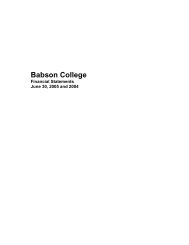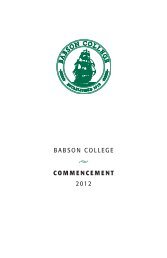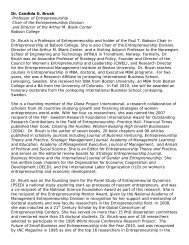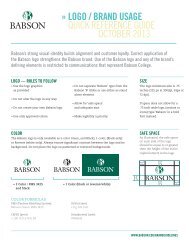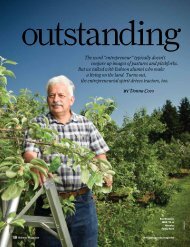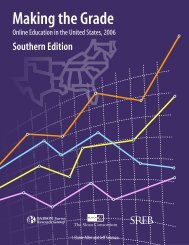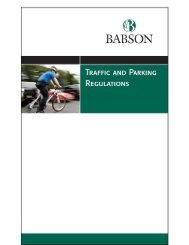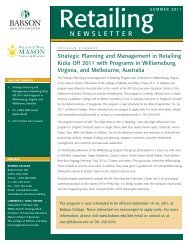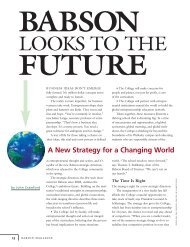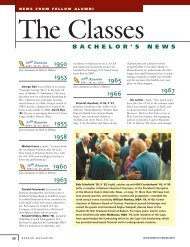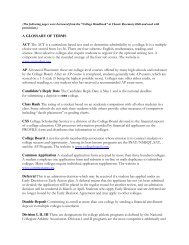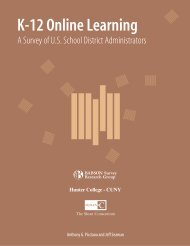fesanco (pdf) - Babson College
fesanco (pdf) - Babson College
fesanco (pdf) - Babson College
Create successful ePaper yourself
Turn your PDF publications into a flip-book with our unique Google optimized e-Paper software.
dynamism that the global economy demanded. He predicted to Ricardo that, sooner or<br />
later, the port system would have to modernize, and there were no private local<br />
companies to help the port administrators find services and resources to maintain their<br />
heavy-duty equipment. Ricardo had heard that the Chilean authorities were willing to<br />
privatize the main Chilean ports under long-term concession agreements, and that the<br />
government would invite domestic and foreign private companies to take over port<br />
management. This work would be done via a new law affecting ports. Miguel’s<br />
reaction to this news was, “This is an opportunity that someone should definitely<br />
prepare for!”<br />
As chief maintenance officer at Agunsa, Miguel was familiar with the entire<br />
marketplace of heavy-duty equipment, and he had worked with several global providers.<br />
Gottwald Port Technology, a German company, was the main provider of equipment<br />
and spare parts for Agunsa because of the high quality of its products and services.<br />
Miguel knew Heinz Hinrichs, the sales director at Gottwald, and Andreas Moeller, the<br />
sales director for the Americas, who were interested in increasing their sales<br />
representatives around the globe.<br />
Gottwald Port Technology, based in Düsseldorf, Germany, was the world’s leading<br />
supplier of mobile harbor cranes (HMK series). The company produced a<br />
comprehensive range of HMK cranes with lifting capacities of up to 120 tons and a<br />
radius of up to 56 meters, in addition to rail-mounted portal harbor cranes (HSK series).<br />
Gottwald also offered services for terminal operators, from conceptual design and<br />
operational layout, to basic engineering of equipment and systems, to automated guided<br />
vehicles (AGV) and automated container stackers (ACS). The company had a<br />
workforce of around 700 employees in Düsseldorf at the time, and the profit for fiscal<br />
year 1999 was around $200 million.<br />
In the course of his work, Miguel often supervised projects to upgrade and modernize<br />
the equipment and logistical processes at Agunsa. He worked with Rolando Ramos,<br />
who was in charge of the planning and control of logistics and operations. Rolando had<br />
a degree in business administration, and he was known at Agunsa as a methodical and<br />
organized professional who was good at strategic planning and management. Because of<br />
their complementary skills, he and Miguel were a successful team.<br />
The Asian Crisis<br />
While Miguel was working at Agunsa, the Asian Crisis started in Thailand in 1997 and<br />
quickly spread to Indonesia, Korea, Japan, Hong Kong, Malaysia, Singapore, the<br />
Philippines, and Indonesia (see Exhibit 3).<br />
The effects of the Asian Crisis were felt in Latin America starting in October 1997,<br />
when Asia’s currency devaluations started pressuring other markets, which in turn<br />
transformed a regional drama into a broader crisis of emerging economies. Latin<br />
America was affected through two main channels: finance and trade. As a result, Latin<br />
American trade balances with Asia deteriorated. The price of essential goods like<br />
copper and petroleum—the primary Latin American exports—declined significantly in<br />
1997 due, in no small measure, to the reduction of the Asian demand. Chile was<br />
especially exposed because 38.12 percent of its exports were to Asia (see Exhibit 4).<br />
4



